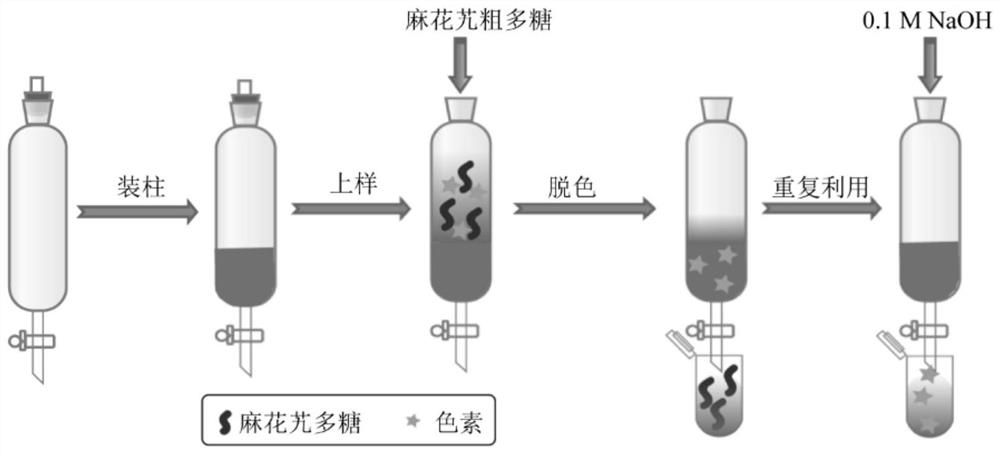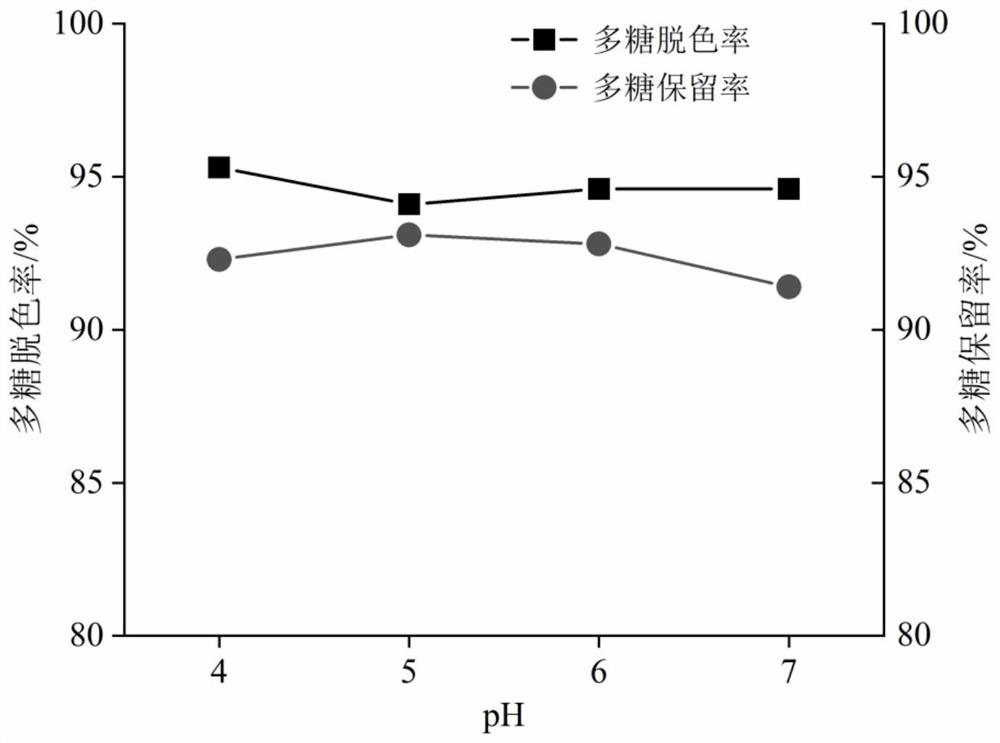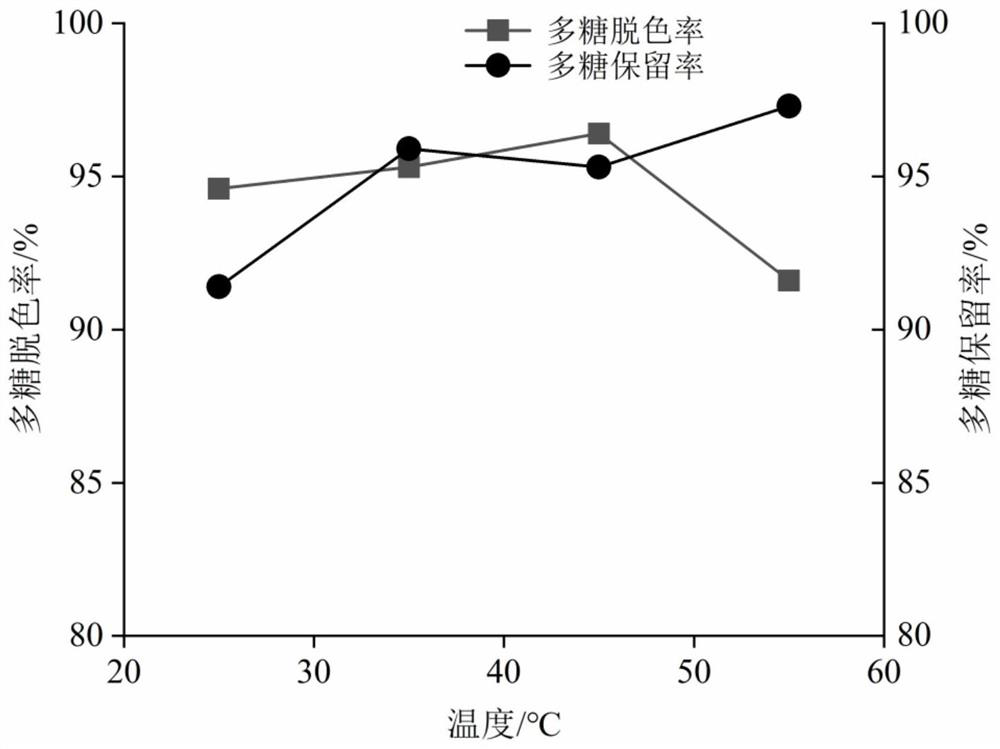Method for removing gentiana straminea polysaccharide pigment by using three-dimensional porous amino graphene decolorizing column
An aminographene, three-dimensional porous technology is applied in the field of three-dimensional porous aminographene decolorization column to remove the polysaccharide pigment of P. chinensis, which can solve problems such as low efficiency and low decolorization rate, and achieve high decolorization rate and recovery rate and high decolorization efficiency , the effect of high polysaccharide retention rate
- Summary
- Abstract
- Description
- Claims
- Application Information
AI Technical Summary
Problems solved by technology
Method used
Image
Examples
Embodiment 1
[0036] Step 1, using natural graphite as a material, after preparing graphene oxide by the classic Hummers method, prepare a graphene oxide solution with a concentration of 6 mg / mL; mix the graphene oxide solution and ethylene dioxide with a concentration of 6 mg / mL in volume ratio Amine, the mixed solution A is prepared, the mixing ratio is graphene oxide solution: ethylenediamine=200:1.2, the mixed solution A is ultrasonicated for 10min, and then transferred to an autoclave with a polytetrafluoroethylene liner, at 120 ° C After reacting for 14 hours, a three-dimensional porous amino-graphene hydrogel was obtained, which was washed with deionized water and loaded into a chromatogram to obtain a three-dimensional porous amino-graphene decolorization column.
[0037] Step 2. Dissolve the washed Gentiana in distilled water according to the solid-liquid ratio of 1g: (10-20)mL to obtain mixture B. Ultrasonic extract the mixture B for 3 times, collect and combine the extractions of ...
Embodiment 2
[0043] Step 1, using natural graphite as a material, after preparing graphene oxide by the classic Hummers method, prepare a graphene oxide solution with a concentration of 6 mg / mL; mix the graphene oxide solution and ethylene dioxide with a concentration of 6 mg / mL in volume ratio Amine, to prepare a mixed solution A, the mixing ratio is graphene oxide solution: ethylenediamine = 200: 1.2, the mixed solution A ultrasonic 10min, and then transferred to a polytetrafluoroethylene lined autoclave, at 120 ° C After reacting for 14 hours, a three-dimensional porous amino-graphene hydrogel was obtained, which was washed with deionized water and loaded into a chromatogram to obtain a three-dimensional porous amino-graphene decolorization column.
[0044] Step 2. Dissolve the washed Gentiana in distilled water according to the solid-liquid ratio of 1g: (10-20)mL to obtain mixture B. Ultrasonic extract the mixture B for 3 times, collect and combine the extractions of the 3 extractions ...
Embodiment 3
[0050] Step 1, using natural graphite as a material, after preparing graphene oxide by the classic Hummers method, prepare a graphene oxide solution with a concentration of 6 mg / mL; mix the graphene oxide solution and ethylene dioxide with a concentration of 6 mg / mL in volume ratio Amine, to prepare a mixed solution A, the mixing ratio is graphene oxide solution: ethylenediamine = 200: 1.2, the mixed solution A ultrasonic 10min, and then transferred to a polytetrafluoroethylene lined autoclave, at 120 ° C After reacting for 14 hours, a three-dimensional porous amino-graphene hydrogel was obtained, which was washed with deionized water and loaded into a chromatogram to obtain a three-dimensional porous amino-graphene decolorization column.
[0051] Step 2. Dissolve the washed Gentiana in distilled water according to the solid-liquid ratio of 1g: (10-20)mL to obtain mixture B. Ultrasonic extract the mixture B for 3 times, collect and combine the extractions of the 3 extractions ...
PUM
 Login to View More
Login to View More Abstract
Description
Claims
Application Information
 Login to View More
Login to View More - R&D
- Intellectual Property
- Life Sciences
- Materials
- Tech Scout
- Unparalleled Data Quality
- Higher Quality Content
- 60% Fewer Hallucinations
Browse by: Latest US Patents, China's latest patents, Technical Efficacy Thesaurus, Application Domain, Technology Topic, Popular Technical Reports.
© 2025 PatSnap. All rights reserved.Legal|Privacy policy|Modern Slavery Act Transparency Statement|Sitemap|About US| Contact US: help@patsnap.com



